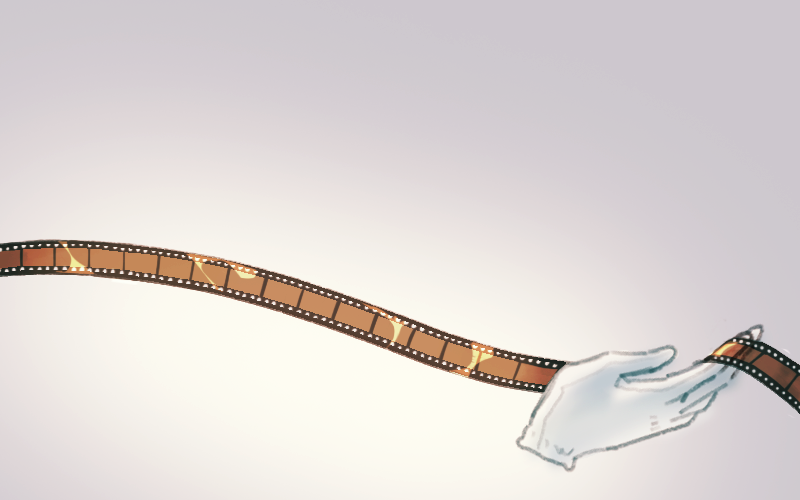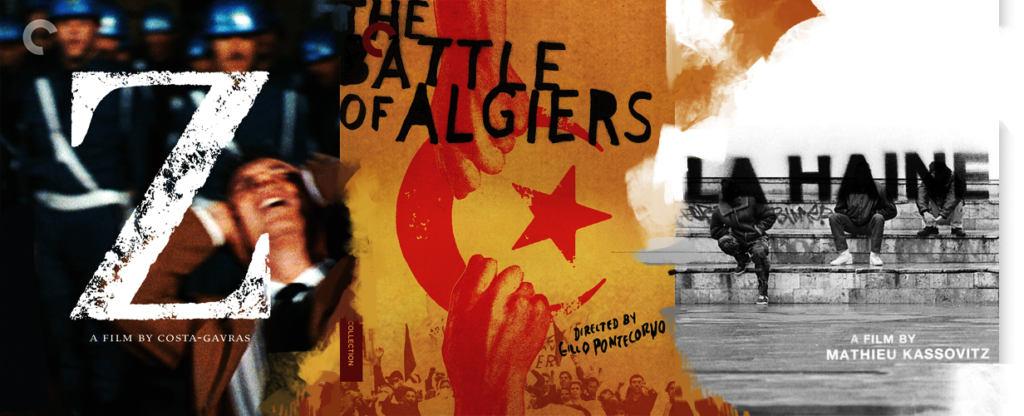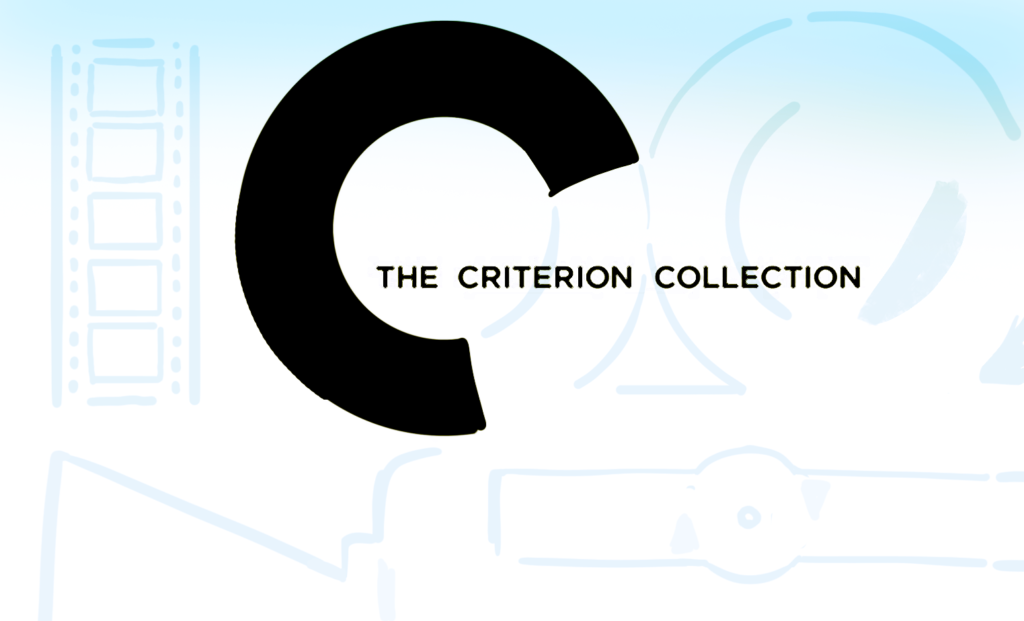It’s become something of a truism that our era is dominated by the visual. Movies tend to be a lot more easily accessible than books. It takes, for example, a lot less time to watch any part of the Star Wars trilogy than it does to read Joseph Campbell’s epic study of world mythology, even if the hero’s journey of Luke Skywalker matches up pretty neatly to the one outlined by Campbell’s scholarship. If you pay attention, you can get pretty much everything you need from a movie in about two hours or so. But if you have the opportunity to see how the movies inevitably incorporate and connect to everything else in life, you can never get to the bottom of everything cinema has to offer. If you decide to undertake a hero’s aesthetic journey of your own and go wandering through the endless labyrinths of film history, eventually you will find yourself gleefully absorbing more visual vitamins and minerals than you ever thought possible.
Luckily, for a guy like me who had no skills in that department, the college I went to specialized in fine arts, especially film, and thus the campus library was pretty well-stocked with classics from Hollywood and beyond. I found myself routinely cutting my philosophy classes to check into the small, cozy, dimly- lit rooms in the back of the computer lab where the DVD players lived (and even some old, clunky, Laserdiscs leftover from the ’80s). Putting weighty, musty tomes about Being and Nothingness aside I chose instead to settle in with a stack of equally profound flicks whose titles I’d vaguely heard of but had never previously bothered to check out. And once I did, I didn’t realize it, but I was hooked for life.
I made acquaintances with the likes of Dr. Strangelove, On the Waterfront, The 400 Blows, Chinatown, Double Indemnity, The Man Who Shot Liberty Valance, 8 ½, Taxi Driver, and so on. My virginal eyes filled with the enticing glow of previously unimaginable worlds, each one more uniquely captivating than the last. After I graduated, I honed my taste on the hard stuff. Soon, I was skipping much-needed sleep to gorge on tales of medieval samurais from Japan, impeccably well-dressed existential French gangsters, tortured Russian mystics, desperate Italian street urchins, and whatever that the world of cinema — and, by extension, the actual world itself — had to offer. Eventually, I noticed more and more of these titles tended to have the better editions, with snazzy artwork and sharper cinematography, which were inevitably released by The Criterion Collection.
Based in New York City, Criterion modestly bills itself as offering “a continuing series of important classic and contemporary films” which is kind of like saying that a library is a place where there’s a lot of books around and anyone can use the bathroom. I once read that when someone asked Quentin Tarantino where he went to film school, he snapped back that he didn’t go to film school, he went to films. That’s basically Criterion’s mission in a nutshell: offering the glory of cinema to film buffs and newbies alike. Criterion has recently gotten back into the streaming game with The Criterion Channel. Their first streaming effort, a partnership with Turner Classic Movies, FilmStruck, was cruising along just fine until it was unceremoniously chucked after its parent company underwent a corporate merger, with the usual mangled bureaucratic syntax promising to use “key learnings” from the site. It’s heartwarming to see how many people signed up for the Criterion Channel right away, helping to keep it alive and independent while our media platforms keep their conglomerating into monoliths.

Criterion’s M.O. is simple- select a movie that has long been lost, gone unappreciated, accrued a devoted cult following, or just be lesser-known titles from a master director like, say, Hitchcock or Welles. They scrub up the existing celluloid prints using up-to-date technology, add some tastefully arranged bonus features like behind the scenes featurettes, witty and informed liner notes, insider documentary footage, and interviews with actors and critics to help put everything in context to better contextualize the frenzy on the screen. In some cases, the original prints might be severely damaged and so Criterion does the crucial painstaking work of restoring and preserving vital parts of cinema history. Rumor has it that one of the prints of Dreyer’s exalted silent film The Passion of Joan of Arc was left to rot for years in an insane asylum until Criterion unearthed it and now Rene Falconetti’s luminous piety (some have argued that it’s the greatest performance in film history) is permanently recaptured in all its glory. Criterion allows home audiences the satisfaction of being able to see the movie in a pristine form that often makes the experience richer than it probably was when it was first released.
Criterion particularly excels at offering comprehensive sets that cover wide swaths of directors’ formidable careers, exploring Hitchcock’s obsessions with wrong men and notorious women, for example, or Rainer Werner Fassbinder’s incisive The BRD trilogy about postwar Berlin. Watching these lovingly curated selections, you get a feel for a particular auteur’s unique vision. It’s not necessarily the case that legendary directors have to make unpopular or dense films to be considered Great but it’s definitely true that they will show you something you’ve never seen before. Watching Criterion movies didn’t just teach me fun facts about film history (though it did that, too) it did me a much greater favor: it taught me how to see.
Maybe this is embarrassingly nerdy for me to admit, but I’ve developed a habit of reading about specific movies in depth even before I end up sitting down to see them. Steve Martin once cracked that “all of life’s questions are answered in the movies.” Of course, this is another one of his typically glib one-liners, but like a lot of Martin’s comedy, there’s some Zen wisdom hiding in there. After all, like any art form, movies take the raw stuff of life — how humans interact, how people talk and dress and move and think — and project it on a big screen for all to examine. Reading what a perceptive critic has to say about a movie, how they interpret different scenes and characters, can open up new ways of thinking about your own life, and of understanding the motivations of the people around you. You see better, deeper, more poetically after having your mind blown by a great movie. It recasts the world outside of the screen, the so-called “real” one, in new shades of color.
Every filmmaker worth their salt adds a new dash of color to the spectrum. I had never heard of Samuel Fuller before digging into Criterion, but his tough but exquisitely arranged tales of hard luck and broken dreams within the madness of underworld America like Pickup on South Street and especially the crackling, near-bonkers Shock Corridor have never left me. The world would be a more boring place without the mad genius of Rainer Werner Fassbinder, who did to German cinema what the Velvet Underground did to pop songs. Vanya on 42nd Street is an exquisite adaptation of classic Russian drama done in modern lingo by well-known actors in street clothes (including Wallace “inconceivable!” Shawn and the Dad from Punky Brewster) and understandably might not have been destined to make a huge splash at the multiplex but I for one have never been able to watch it without a lump in my throat.

Given their accessibility, movies have always had a political aspect, and especially in our myopically partisan era, there’s a real value in learning about the kind of history that they don’t teach you in school. Costas-Gavras’ seething Z dramatizes the mutinous turbulence of Greek politics in the late ’60s before the smoke had cleared in the streets of Athens and happens to be the only fictional movie I’ve ever seen that declares right up front that this story is entirely based on true facts and the guilty parties’ names have decidedly NOT been changed. The Battle of Algiers is one of the most uncompromisingly realistic films ever, so much so that the Pentagon screened it to illustrate the finer points of urban guerilla combat prior to the second Iraq War, which reinforced the ripped-from-the-headlines verisimilitude. Same goes for La Haine, a sadly still relevant but visually dynamic 1995 black and white French film about the aftermath of a deadly riot in the Paris banlieue in response to flagrant police brutality that manages to be alternately sarcastically funny, morally outraged, and deeply moving.
Or take a grandmaster like the Spanish master surrealist Luis Buñuel, who collaborated with Salvador Dali in permanently slicing up the metaphorical eyeballs of anyone brave enough to watch Un Chien Andalou from its 1929 debut screening to the present day. That was only his debut. Bunuel kept the exquisitely freaky subversion going strong over a long and fruitful career working across the globe and spinning his alluringly surreal tales of thwarted erotic longing like Belle du Jour and That Obscure Object of Desire, which features not one but two quite different looking ladies in the same role of the ultimate femme fatale. Then, there’s The Discreet Charm of the Bourgeoise, which illustrates once and for all the madcap hijinks that can ensue when a group keeps trying to sit down and have dinner.
Just in case all this cinephilia is beginning to sound insufferably highbrow or pretentious, it’s good to emphasize that part of the fun of Criterion’s curation is how playfully they mix up the movie titles that end up getting the big rollout. For every beautifully bleak film by the likes of, say, Bergman or Antonioni, there’s an anthology of Beastie Boys videos, This is Spinal Tap, the totally rad 80’s punk farce Repo Man, or the wackadoodle Japanese scream-fest known as House. Preston Sturges and Ernst Lubitsch knew how to get laughs with elegantly witty banter and made subtly caustic observations about human nature while they were at it. Never forget that movies can be great art even if they’re intended to be pure enjoyment, precisely because that’s the only aesthetic mark they aim to hit, and thankfully Criterion has understood this from the start.
There’s no reason to deny oneself the pleasures of a well-made, poignantly observed intergenerational drama a la the great Yasujiro Ozu or the sheer delight of watching Charlie Chaplin or Jacques Tati’s Monsieur Hulot (one of the inspirations for Mr. Bean) frisk and gambol about the maddening modern world. But movies are nothing without music and you can also rock out to The Monterey Pop Festival, cringe in horror at the Rolling Stones’ legendarily lethal Altamont concert Gimmie Shelter, or shimmy along to the Buena Vista Social Club’s Havana rhythms. Criterion’s passion for finding classic films is expansive enough to offer something for every taste, generously including so-called “high” and “low” art in their pantheon. Their recently unveiled thousandth release was a huge box set of Godzilla movies, which only proves the point.

With the impressively high quality of TV programming available these days it sometimes seems like movies are getting relegated to the dustbin of pop culture history. Everyone’s streaming all the time. A lot of ink has been spilled about how risk-taking and literate the TV renaissance has been, much of which is accurate enough, but we should remember where these showrunners got their inspiration from in the first place. The Sopranos creator David Chase has often spoken of his love of idiosyncratic films by the likes of Criterion favorites Polanski and Fellini, and his obsession with European art films guided Tony’s famed dream sequences. Sometimes you can get a lot of unexpected pleasure out of discovering your favorite director’s favorite director.
As the great French New Wave innovator Jean-Luc Godard once said, “it’s not where you take things from that matters, it’s where you take them to.” History is there to be used, not merely learned by rote. If people don’t take up the opportunity to enjoy the endless variety of what the world of cinema has to offer, all I can do is shrug and suggest that they don’t know what they’re missing. I mentioned Star Wars earlier, but did you know that a lot of the movie’s plot (rescuing a princess, for example) and some of the most beloved secondary characters (such as a fat, inarticulate peasant and a tall and voluble shmuck who keep bantering with each other) is based on Akira Kurosawa’s The Hidden Fortress? It’s not just a fun fact, either: I swear I’ll commit Hara-Kiri if it’s not every bit as epic and just plain fun to watch now as it was back in 1958. And of course, there are the colorful ensembles of Robert Altman’s films who is Paul Thomas Anderson’s acknowledged hero, or the witty dames and leathery hombres of Howard Hawks, who John Carpenter can’t stop geeking out about, and crusty old John Ford’s Westerns wouldn’t be nearly as magnificent if he hadn’t studied the films of Jean Renoir, son of the painter, as closely as he did.
If we’re destined to get most of our artistic kicks from the visual arts now, that only makes partaking in Criterion’s cinematic bounty more urgent than ever. Watching Criterion movies reminds us that audiences are really not all that different at heart — we all want the big screen to be filled with something special: exciting, dramatic, funny, sexy, profound, adventurous. And the more you delve into the kinds of movies that Criterion offers, the more you see a delightful paradox at work: even if we as audiences ultimately want to feel the same kinds of things, there are an infinite number of ways to do it. Watching classic films offers an infinite banquet of what happens when you find out what’s available. In Godard’s wonderfully nutty Pierrot Le Fou, the real-life Samuel Fuller is asked, while puffing a cigar and looking cool as hell what cinema is and his answer is as good as any I’ve ever heard. Meditatively taking the cigar from his mouth, the great man opines like so: “film is like a battleground . . . Love. Hate. Action. Violence. Death. In one word, emotions.” Criterion has made a long and illustrious career out of offering some of the widest ranges of emotions available. And now it’s all just a click away. Why miss out? •




